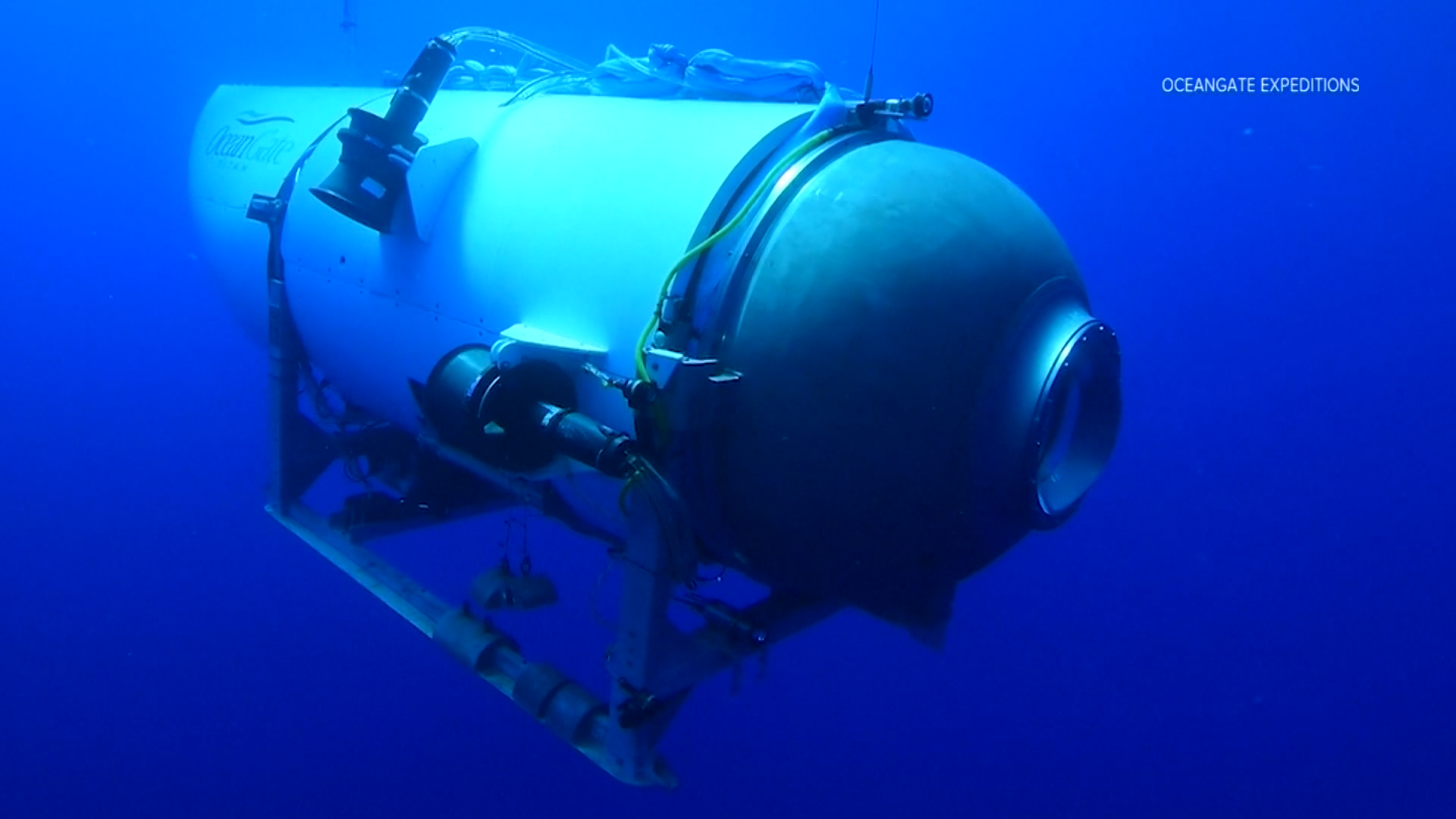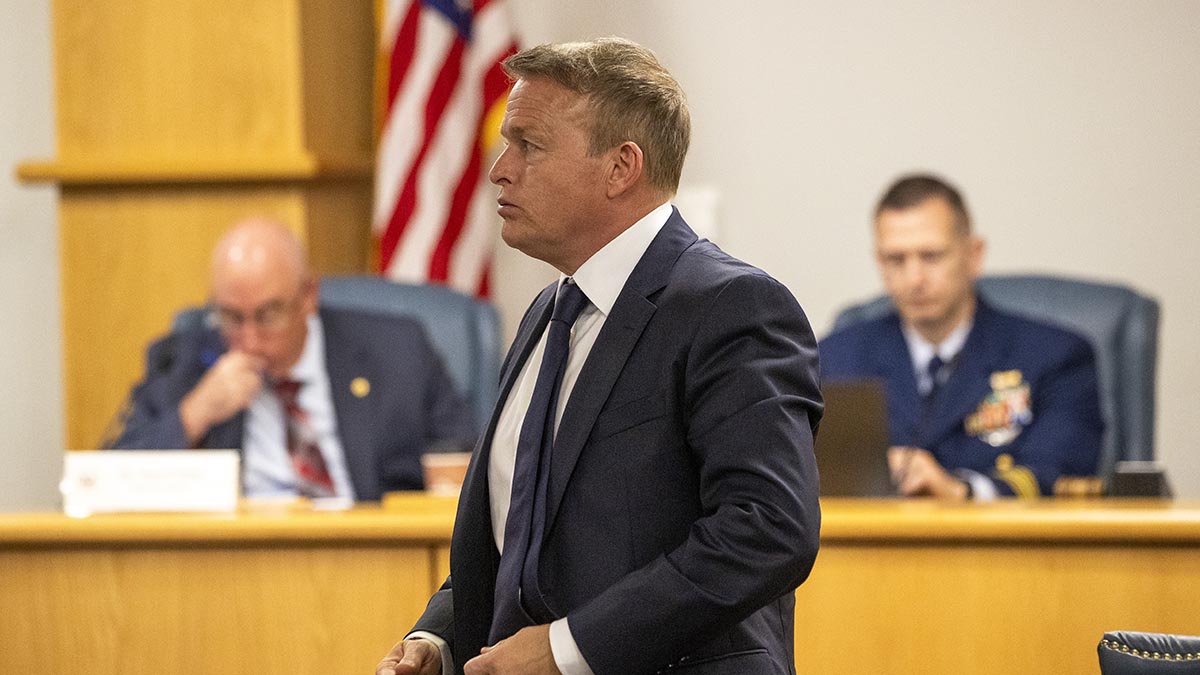
A key employee with the company that owned the experimental submersible that imploded en route to the wreckage of the Titanic pushed back at a question from a Coast Guard investigator about whether OceanGate felt a sense of “desperation” to complete the dives because of the high price tag.
Amber Bay, director of administration for the company that owned the doomed Titan submersible, insisted Tuesday that the company would not “conduct dives that would be risky just to meet a need.”
But she agreed that the company wanted to deliver for those who paid $250,000 and were encouraged to participate as “mission specialists.”
“There definitely was an urgency to deliver on what we had offered and a dedication and perseverance towards that goal,” she told a Coast Guard panel.
Get top local stories in San Diego delivered to you every morning. >Sign up for NBC San Diego's News Headlines newsletter.
OceanGate co-founder Stockton Rush was among the five people who died when the submersible imploded in June 2023.
The Coast Guard opened a public hearing earlier this month that is part of a high level investigation into the cause of the implosion. Some of the testimony has focused on the troubled nature of the company.
On Tuesday, Bay pushed back at earlier testimony from Antonella Wilby, a former OceanGate contractor who said Bay told her “you don’t seem to have an explorer mindset” after she raised safety concerns. Bay said Wilby’s concerns were noted at the time and treated with respect, and said she wasn’t involved in engineering or operations.
She later broke down in tears when discussing the tragedy, which was personal, because she knew the victims.
“I had the privilege of knowing the explorers lives who were lost,” Bay said through tears. “And there’s not a day that passes that I don’t think of them, their families and the loss.”
More on the Titan hearing
Earlier in the hearings, former OceanGate operations director David Lochridge said he frequently clashed with Rush and felt the company was committed only to making money. “The whole idea behind the company was to make money,” Lochridge testified. “There was very little in the way of science.”
Lochridge and other previous witnesses painted a picture of a company that was impatient to get its unconventionally designed craft into the water. The accident set off a worldwide debate about the future of private undersea exploration.
On Tuesday, submersible pilot and designer Karl Stanley of the Roatan Institute of Deepsea Exploration testified to provide perspective about deep-sea submersible operations and safety. He said the phenomenon of “billionaires courting scientists” has upset the economics of the industry.
Stanley also said he viewed OceanGate's characterization of paid passengers as “mission specialists” to be an attempt to avoid accountability.
“It's clearly a dodge with trying to get around U.S. regulations with passengers,” Stanley said.
Businessman Guillermo Sohnlein, who helped found OceanGate with Rush, said during testimony Monday that he hoped a silver lining of the disaster is that it will inspire a renewed interest in exploration, including the deepest waters of the world’s oceans.
“This can’t be the end of deep ocean exploration. This can’t be the end of deep-diving submersibles and I don’t believe that it will be,” he said.
The hearing is expected to run through Friday and include several more witnesses, some of whom were closely connected to the company.
Coast Guard officials noted at the start of the hearing that the submersible had not been independently reviewed, as is standard practice. That and Titan’s unusual design subjected it to scrutiny in the undersea exploration community.
OceanGate, based in Washington state, suspended its operations after the implosion. The company has no full-time employees currently, but has been represented by an attorney during the hearing.
During the submersible’s final dive on June 18, 2023, the crew lost contact after an exchange of texts about Titan’s depth and weight as it descended. The support ship Polar Prince then sent repeated messages asking if Titan could still see the ship on its onboard display.
When the submersible was reported overdue, rescuers rushed ships, planes and other equipment to an area about 435 miles (700 kilometers) south of St. John’s, Newfoundland. Wreckage of the Titan was subsequently found on the ocean floor about 330 yards (300 meters) off the bow of the Titanic, Coast Guard officials said. No one on board survived.
OceanGate said it has been fully cooperating with the Coast Guard and NTSB investigations since they began. Titan had been making voyages to the Titanic wreckage site going back to 2021.



